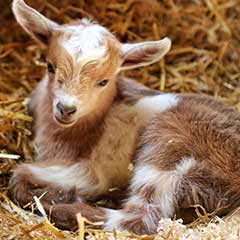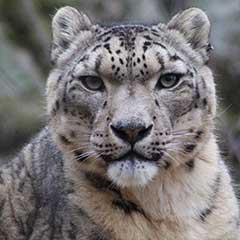Giraffes make their spring exhibit debut at Franklin Park Zoo
Thursday May 10, 2018
Visitors to Franklin Park Zoo will notice a new face on the Giraffe Savannah with the recent debut of Chad, a 2-year-old male Masai giraffe.
Chad, who was born at the Santa Barbara Zoo, joins Amari, a nearly 2-year-old female Masai giraffe who was born at Franklin Park Zoo. It is hoped that one day Chad and Amari will have their own offspring to contribute to the preservation of their species.
“We are thrilled that Chad and Amari can now be seen together on the Giraffe Savannah,” said John Linehan, Zoo New England President and CEO. “They have been getting along well, and it is so nice for our guests to have the opportunity to watch them grow up together.”
As an active participant in the Giraffe Species Survival Plan (SSP), Zoo New England plays an important role in the protection of this species. SSPs, which are cooperative, inter-zoo programs coordinated nationally through the Association of Zoos and Aquariums (AZA), help to ensure the survival of selected species in zoos and aquariums, most of which are threatened or endangered, and enhance conservation of these species in the wild. While Chad’s arrival is a result of a breeding recommendation through the Giraffe SSP, it will be a few years before he and Amari are old enough to breed. Amari’s mother Jana moved to the Columbus Zoo per a breeding recommendation from the SSP.
Through the SAFE program (Saving Animals from Extinction), AZA-accredited zoos, like Franklin Park Zoo, and their partners are working collectively to help save giraffe through education, scientific research, field work, public awareness and action.
Giraffes have been going through a silent crisis in the past few years in that their numbers in the wild have dropped dramatically with little notice. It is estimated that the number of giraffes in the wild has decreased by about 40 percent with less than 100,000 giraffes left throughout Africa. Threats include habitat loss, habitat degradation, habitat fragmentation, population growth and poaching.
At Franklin Park Zoo, the giraffes can be seen on exhibit at the Giraffe Savannah if it is at least 55 degrees and nice weather. If it’s raining, the temperature cut-off is 65 degrees.
Look for other notable faces this spring
 Foles, the Nigerian dwarf goat kid
Foles, the Nigerian dwarf goat kid
Visitors to Franklin Park Zoo’s Franklin Farm are noticing an adorable new face following the April 23 birth of a Nigerian dwarf goat.
The kid, who weighs about 5 pounds, was named Foles per a Super Bowl bet between Franklin Park Zoo and the Philadelphia Zoo. A New England Patriots win meant that Philadelphia Zoo had to name their next born goat Brady, while an Eagles win meant we had to name our next born goat Foles. We made good on our promise, and hence a goat kid named Foles in Boston!
Himal the snow leopard
 At Stone Zoo, Himal, a male snow leopard, made his exhibit debut alongside female Kira earlier this spring.
At Stone Zoo, Himal, a male snow leopard, made his exhibit debut alongside female Kira earlier this spring.
Himal’s arrival from the Denver Zoo is a result of a breeding recommendation from the Snow Leopard SSP. Himal and Kira have been getting along well, and we are hopeful that they will successfully produce offspring in the near future.
Zoo New England is committed to the preservation of this species, and is a longstanding member of the Snow Leopard Trust’s Natural Partnership Program (NPP), contributing funds to support research and programs aimed at protecting snow leopards and their natural habitat.
With their thick, cream-colored coats and gray-black spots, snow leopards camouflage so well within their rocky habitat high in the Himalayas that they are known as the “ghosts of the mountain.” With the ability to leap down heights of 60 feet, snow leopards are said to be the most agile of the “big cats.”

